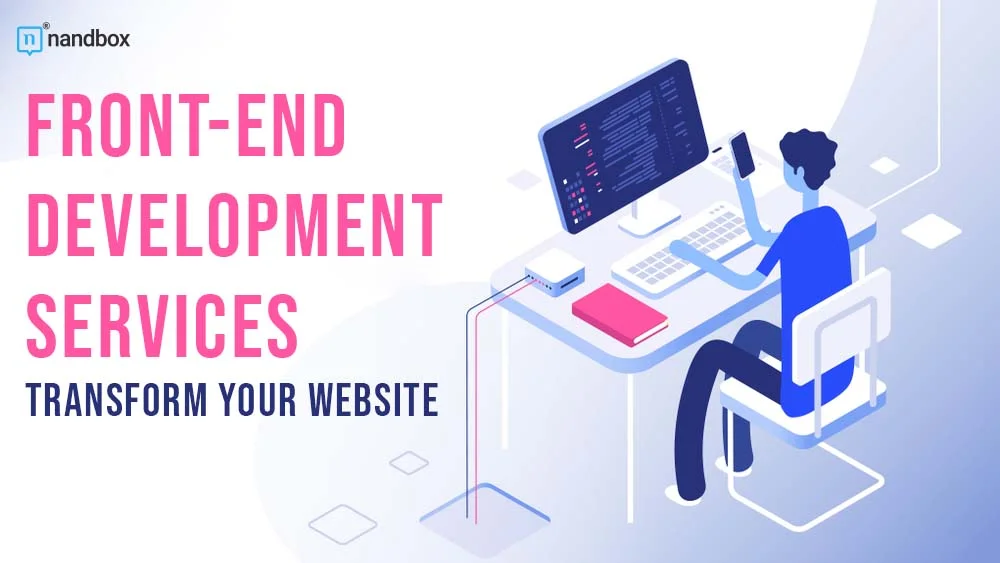Front-end development services is the process of building the part of a website or online application that users interact with. It includes the layout, design, and interactive elements. Effective front-end development makes a website visually appealing, easy to navigate, and functional, directly impacting user satisfaction and determining whether users stay on your site or leave for a competitor’s.
Any trusted front-end development services company can greatly improve your site’s performance and user experience. This is especially true for digital businesses. These professionals use best practices to create efficient, responsive, and user-friendly sites or enhance and revitalize existing ones. But what does “enhancing websites” really mean? Let’s find out.
Enhanced User Experience
User-centric design is essential for any successful website. It focuses on the needs and preferences of users, making their experience smooth and enjoyable. When a website is easy to navigate, visitors can find what they need without frustration. Intelligent navigation guides users effortlessly, while responsive design ensures the site looks and works well on any device. Interactive elements, like buttons and forms, engage users and make the website more dynamic.
Professional frontend web development services can transform your website’s user experience. For example, an e-commerce site with a cluttered layout and slow load times might frustrate potential customers, leading to lost sales. After a redesign by a development company, the site could feature a clean, organized layout, faster load times, and a mobile-friendly design. This would not only make the shopping experience more enjoyable but also increase customer satisfaction and sales. Real-world examples show that investing in professional front-end development can lead to significant improvements in user engagement and overall site effectiveness.
Improved Website Performance
Optimized code and efficient resource management are key components of a well-performing website. By minimizing code bloat and using resources effectively, client-side coders can significantly enhance a site’s speed and responsiveness. This means faster loading times, which is critical for retaining visitors. When a website loads quickly, users are more likely to stay and engage with the content, leading to higher satisfaction and better overall performance.
Consider a news website that initially suffers from slow load times and poor responsiveness. After professional development, the site’s load times might drop from eight seconds to two seconds, and its responsiveness across devices could improve dramatically. These improvements can be quantified through performance metrics such as page load speed and bounce rate. For instance, a faster load time can reduce the bounce rate by 50%, keeping more visitors on the site and improving their overall experience. Such enhancements not only boost user engagement but also contribute to higher search engine rankings, driving more traffic to the website.
Modern and Responsive Design
Having a mobile-friendly and adaptive website is crucial in today’s digital landscape. With the majority of users accessing websites from their smartphones and tablets, it’s essential to ensure that your site works well on all devices. A responsive design adapts to different screen sizes, providing an optimal viewing experience whether a user is on a phone, tablet, or desktop. This flexibility not only improves user satisfaction but also helps retain visitors who might otherwise leave a site that is hard to navigate on their device.
Front-end developers ensure compatibility across various devices and browsers. They use techniques such as flexible grids, media queries, and responsive images to make sure the website looks good and functions well everywhere. For instance, an outdated corporate site might be revamped with a modern, responsive design, leading to a significant boost in user engagement. Examples of impactful design transformations include:
- Simplifying navigation menus for touch interfaces
- Ensuring fast load times on mobile networks
- Implementing scalable vector graphics (SVGs) for crisp visuals on any screen
These changes can lead to higher user engagement, lower bounce rates, and improved conversion rates, demonstrating the tangible benefits of building your site with professional developers.
SEO and Accessibility
Front-end development directly impacts your range on Google (in cases where it uses clean and semantic code). Search engines prioritize websites that are well-organized and easy to navigate. Semantic HTML tags like <header>, <article>, and <footer> help search engines understand the content of your site, improving its ranking. Optimizing images, using proper meta tags, and ensuring efficient resource loading also contribute to better search engine performance. These best practices enhance your site’s visibility, driving more organic traffic and improving your online presence.
Accessibility is crucial in web development, ensuring that all users, including those with disabilities, can use your website. Front-end developers achieve this by implementing ARIA roles and labels, providing text alternatives for images and videos, and ensuring the site can be navigated with a keyboard. These measures make your site more inclusive and compliant with legal standards. Accessible websites also tend to perform better in search rankings, as search engines favor user-friendly and compliant sites. Investing in front-end development that focuses on both SEO and accessibility ensures your website reaches a broader audience and delivers a better user experience.
Future-Proofing Your Website
Keeping up with the latest web technologies and trends is essential for maintaining a competitive edge. As technology evolves, so do user expectations. Implementing new tools and frameworks can enhance your website’s functionality, security, and performance. Staying current with these advancements ensures that your website meets modern standards and provides a better user experience.
Professional front-end development services ensure scalability and future readiness by designing websites that can grow with your business. They build flexible architectures that accommodate new features and increase traffic without compromising performance. Continuous updates and maintenance provided by front-end development companies keep your site running smoothly and securely. Regular updates address potential vulnerabilities and ensure compatibility with the latest devices and browsers, offering a robust, future-proof online presence. This proactive approach not only extends the lifespan of your website but also keeps it aligned with the ever-changing digital landscape.
Conclusion
Front-end development services offer transformative benefits for any website. By focusing on user-centric design, improved performance, modern and responsive design, and future-proofing, these services enhance the overall user experience and ensure your website remains competitive. Professional front-end development ensures your site is not only visually appealing but also functional, fast, and adaptable to various devices and future technological advancements.
Investing in professional front-end development services is a smart move for long-term website success. It guarantees a robust, engaging online presence that meets the evolving needs of your audience. If you want to elevate your website’s performance and user experience, consider partnering with a front-end development services company. This investment will help your website thrive in the digital landscape, providing lasting value and a superior experience for your users.





